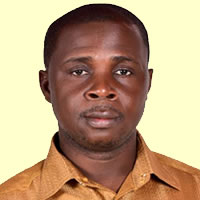Introduction
Labour and employment statistics are essential for effective planning of a nation’s economy. The census results in the past have not only provided data on Ghana’s labour market and its population characteristics, but have also been a major source of information for advocacy and manpower planning in the country. This chapter discusses the changes in the structure of the population of Ghana with regard to the proportion of economically active and economically not active persons in the Banda District. The economically active population comprises the unemployed and the employed. The characteristics of the population are related to age, sex, location, marital status and level of education.
Economic Activity Status
Economic activity status and sex
Table 4.1 shows the activity status by sex of all persons 15 years and older in the population of the Banda District. Out of the total population of 20,282 in the district, 58.9 percent are 15 years and older. From the table, the economically active population constitutes 79.2 percent with that of the economically not active being 20.8 percent. The majority of those aged 15 years and older is employed (97.0%) and the unemployed form just 3.0 percent.
The male population aged 15 years and above who are economically active constitutes 82.7 percent and 17.3 percent is economically not active. Close to one-quarter (24.3%) of the female population aged 15 years and over are economically not active while those who are economically active constitute 75.7 percent in the district. Of the male population aged 15 years and older, 97.8 percent are employed and 2.2 percent is unemployed. For females aged 15 years and older, 3.9 percent is unemployed while 96.1 percent is employed.With respect to the unemployed, majority of them is first time job seekers (52.5%) compared to the remaining 47.5 percent who had worked before. In terms of sex, almost three out of every five males (60.0%) are seeking job for the first time compared to 47.6 percent of their female counterparts.
There is a marked variation between males and females in terms of the proportion of the economically inactive population who performed home duties and full time education. Table 4.1 indicates that 58.9 percent of the males who are economically not active are in full time education compared with just 33.6 percent for their female counterparts. On the other hand, females form a higher proportion (29.7%) of those who did household chores than males (15.3%). In addition, females form more than twice the proportion of males (13.9%) who did not work due to their age (25.7%). Pensioners or retired persons in the district constitute the least percentage (1.0%).
Economic activity status, sex and age
According to the 2010 PHC, activity status refers to the economic or non-economic activity of respondents during the seven days preceding the Census Night. Economically active population includes persons who were in paid employment or self-employed or contributing family workers; persons who did not work but had jobs to return to; and persons who were unemployed. On the other hand, the economically not active population includes those engaged in home duties, full time education, on pension/retirement, disabled, sick, too old or young and others.
Table 4.2 shows economic activity status of population aged 15 years and older by sex and age. The table shows a sharp increase in employment rate from 45.9 percent in the age group 15-19 to 70.0 percent in the 20-24 age groups. From there the rates increase steadily with increasing age to a peak of 95.2 percent in the age groups 45-49 and 50-54 and declines from there to 55.9 percent at the extreme age group of 65+. On the other hand, the not economically active proportion decreases sharply from 51.5 percent in the age group 15-19 to 23.7 percent in the 20-24 age group. It continues to decrease steadily to a lowest of 3.9 percent and picks up again until it reaches 43.4 percent in the extreme age of 65+.
Similar patterns could be observed between males and females. However, employment rates are generally higher among the males than females while the economically not active rates are higher among females than males. For example, 80.8 percent of the males are employed compared to 72.7 percent of their female counterparts and 24.3 percent of the latter as against 17.3 percent of the former are economically not active. In addition, male unemployment rate (1.8%) is significantly lower than females’ (2.9%). At the extreme ages (65 and over), while 69.7 percent of males are still employed, only 41.2 percent of their male counterparts are in similar situation. On the other hand, while majority of females (54.9%) in the 65+ age category is economically not active, only 29.7 percent of their male counterparts are in that category. In fact in all the age groups male employment rates are higher than females while the reverse is true in the economically not active category.
The proportional distribution of activity status by age shows the distinction between age-based dependency and economic dependency. The economic dependency distinguishes the economically active population of non-economically active population within the age-based dependency. For instance, in theory, the population aged 15-64 years is expected to be economically active while those aged 0-14 and 65years and older are expected to be economically not active and economically dependent on the population age15-64 years.However, Table 4.2 shows that more than one out of every two persons (55.9%) in the population aged 65 years and older is economically active (currently employed) when in theory they are supposed to be economically dependent on the population aged 15-64 years.
This phenomenon could be explained by these reasons
The retirement benefits for the aged (population 65years and older) are not sufficient to economically sustain them in order to live decently;
The income levels of the population aged 15-64 years is not sufficient to enable them fully cater for the economic needs of their dependents;
Some of the self-employed population decides to perform economic activities after attaining 64 years; and Demand for some special skills not attractive to the youth that requires many years of experience are only found among the population 65years and older i.e. lecturers, research fellows, medical doctors, consultants, etc. Besides, there are some class of workers including judges of the superior courts and commissioners of statutory bodies who retire at age 70 years (Republic of Ghana, 1982); and there is no retirement age for politicians (executive and legislature), lawyers and to some extent, medical doctors.
Similarly, a total of 18.6 percent of the population aged 15-64 is economically not active when they are expected to be economically active. The non-activity status of this group is mainly concentrated in the age group 15-19 and 20-24 because they are mainly schooling. Together those aged 15 - 24 years constitute 58.7 percent of the economically not active population. However, the economically not active status of this group decreases with age. For instance, the proportion of the age group 15-19 that is economically not active is 51.5 percent compared to 23.7 percent and 11.2 percent respectively for the age group 20-24 and 25-29.
Occupation
Occupation refers to the type of work that one is engaged in during the seven days preceding the Census Night, and those who did not work but had job to return to, as well as those employed who had worked before (GSS, 2010). Table 4.3 shows the employed population 15 years and above by occupation and sex.
Out of the total of 9,187 people aged 15 years and older in the Banda District, over two-thirds (71.2%) is engaged in skilled agriculture, forestry and fishery. Service and sales workers form 9.5 percent with the least proportion (0.4%) being clerical support workers. The majority of the male population (71.7%) also belongs to the skilled agriculture, forestry and fishery workers. Less than one percent (0.6%) of the male population aged 15 years and older is employed as managers with 3.2 percent of the same population category being service and sales workers. Of the female population 15 years and above, one percent works as managers, 0.4 percent of them is plant and machine operators and assemblers while skilled agriculture, forestry and fishery workers make up 70.7 percent with 16.8 percent being service and sales workers.
Date Created : 11/23/2017 2:39:52 AM





